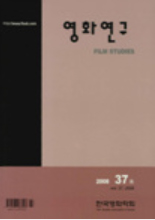- 영문명
- A Comparative Analysis about the Community and Filial Piety as Shown in the Goryeojang and The Ballad of Narayama
- 발행기관
- 한국영화학회
- 저자명
- 이효인
- 간행물 정보
- 『영화연구』제37호, 273~299쪽, 전체 27쪽
- 주제분류
- 예술체육 > 예술일반
- 파일형태
- 발행일자
- 2008.09.30

국문 초록
영문 초록
The present thesis involved the The Ballad of Narayama(1958) by Kinosita Keisuke, the Goryeojang(1963) by Kim Gi-young and the The Ballad of Narayama(1982) by Imamura Syohei, to compare the movie's description about the community and the filial piety. For this purpose, a basic study was carried out about the trends of the works by the three directors, about the social environments when the movies were released, and also about the 'Giro story'. The result showed that Japan in 1958, Korea in 1963 and Japan in 1982 had unique social characteristics, and that the ‘Giro story’ was widespread from India to all over the eastern Asia. The movies of the three directors, which have similar subjects and themes as well as similar background stories, however, were different from one another according to the director's view of the world. Regarding ‘community’ and ‘filial piety’, the three works said as follows: As to the issue of the community, the director Kinosita thought that only the spirit of community could overcome the severe poverty, based on the postwar experience of resolving the problems of disorder and poverty, achieving the economic growth; while the director Imamura took the community as 'a complex place with a minimum role' On the other hand, Kim Gi-yeong described the community as an object which was threatening or was to be overcome. As to the issue of the filial piety also, the director Kinosita considered the filial piety as a subordinate concept to the community's group, as a personal emotion of love and sorrow; while the director Imamura Syohei seemed to consider the filial friendship as the practical pathos (the source of haman mind) which goes beyond personal level to overcome social regulations while accepting the futility of life. To Kim Gi-young, the community seemed to be an oppressive order that did not allow the filial piety, in the situation of the collision between filial piety and community. Through this research it was found that the directors took similar themes or subjects with different views, so a comparative study was attempted on the Korean and Japanese movies.
목차
1. 서론
2. 기초 연구
3. 내러티브 비교 분석
4. 〈나라야마 부시코〉, 〈고려장〉, 〈나라야마 부시코〉의 공동체 및 효(孝)에 대한 입장 차이
5. 맺음말
키워드
해당간행물 수록 논문
참고문헌
최근 이용한 논문
교보eBook 첫 방문을 환영 합니다!

신규가입 혜택 지급이 완료 되었습니다.
바로 사용 가능한 교보e캐시 1,000원 (유효기간 7일)
지금 바로 교보eBook의 다양한 콘텐츠를 이용해 보세요!



